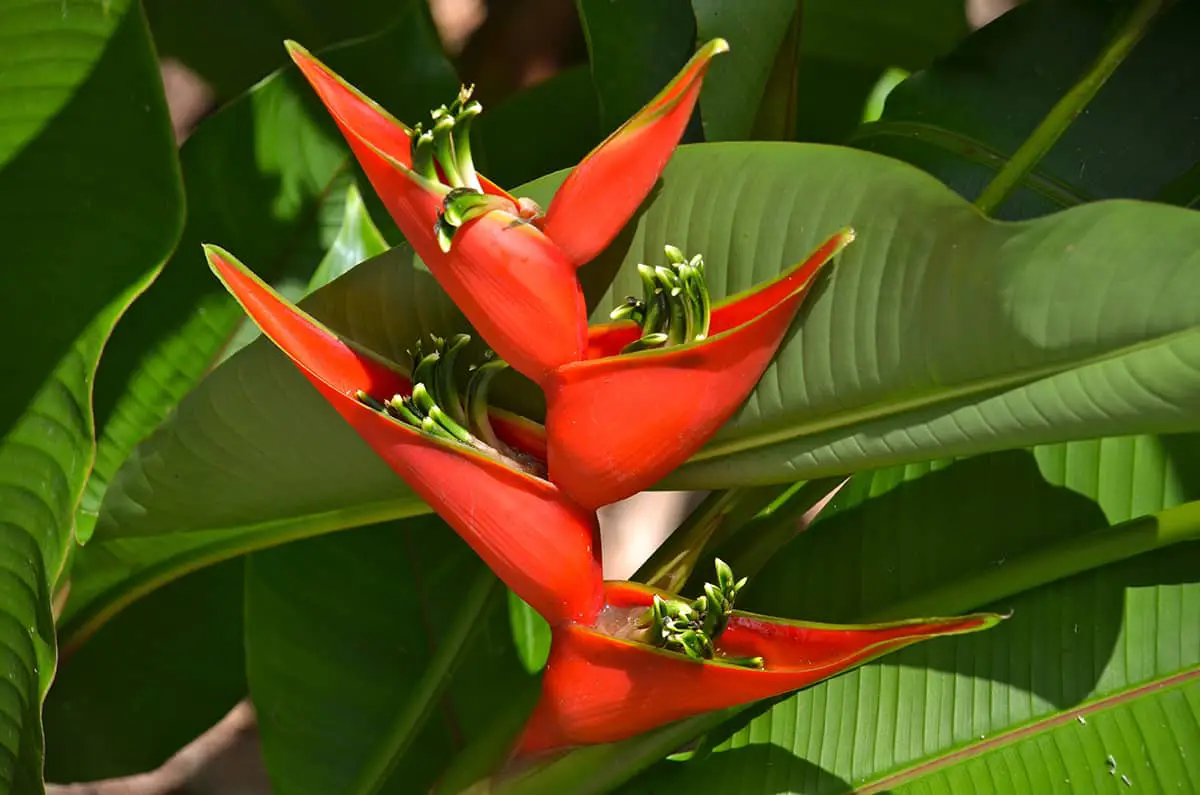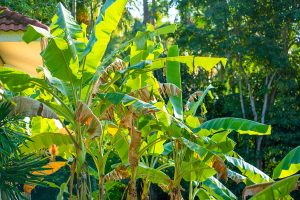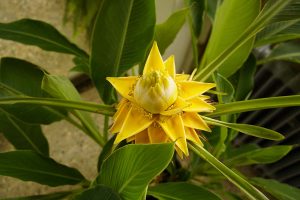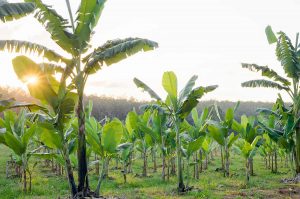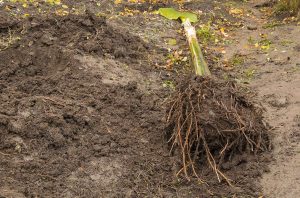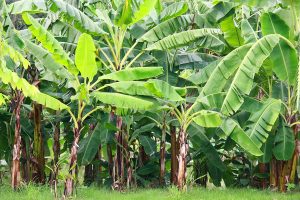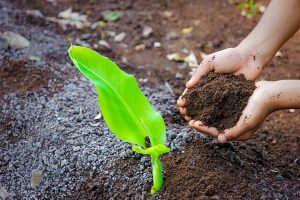The aesthetic of a banana plant is very popular right now, with its huge vertical dark green leaves that add an effortlessly tropical vibe to home interiors and exotic-themed gardens. Unfortunately, true banana plants are not the easiest to care for, and they have quite specific care requirements.
If you want a banana plant outdoors, you’ll also have to ensure the plant is suitable for growing in your local climate, which generally means your climate needs to be free from frost.
Banana plants can also be expensive, and they are slow growing which means that going for a smaller, inexpensive variety of banana plants isn’t necessarily the best solution because it can take a very long time to produce the massive leaves you’re hoping for.
One option, if you love the look of banana plants but don’t want to battle against their high maintenance needs, is to get a plant that looks similar instead.
Table of Contents
What is a Banana Tree?
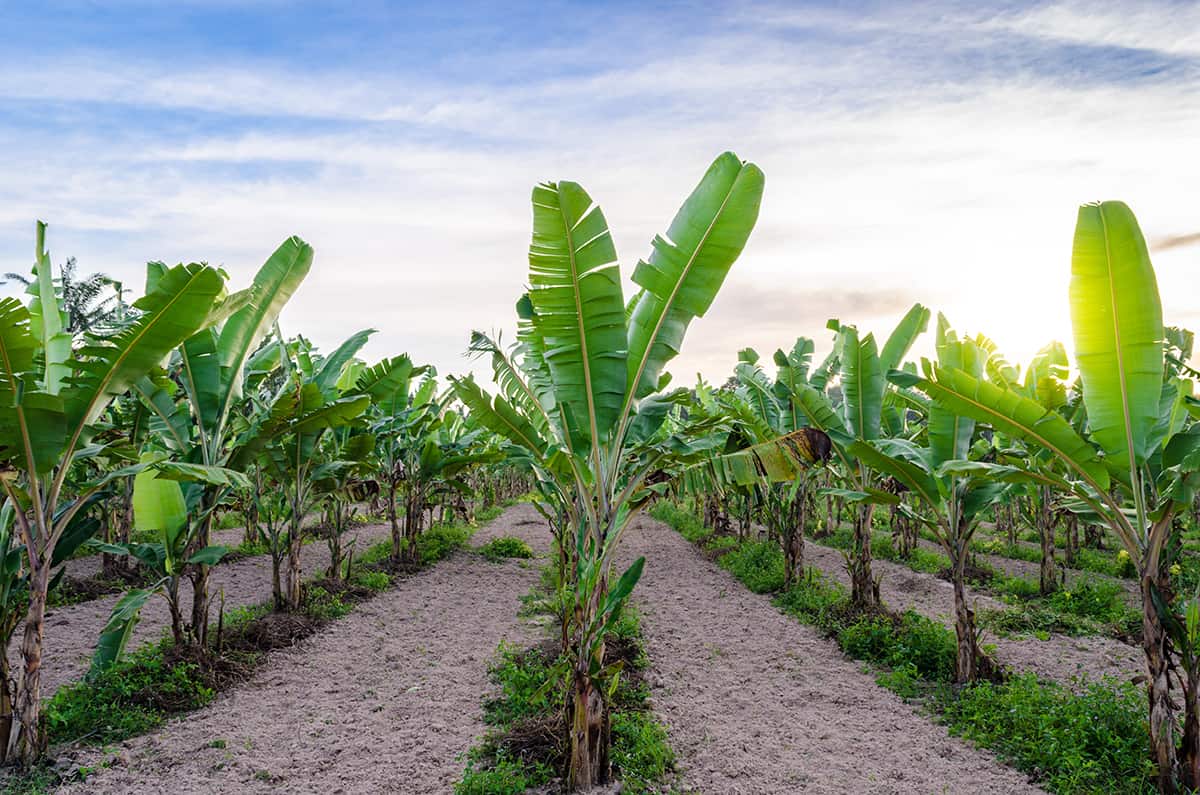
The banana tree is actually not a tree at all. Instead, banana trees, also called banana plants, are actually a type of perennial herbaceous plant. They do not have trunks but instead have multiple erect stems which clump together and are surrounded by leaves sent up from underground rhizomes.
This can create the look of a trunk, but it is not woody. Banana plants are native to tropical areas where they are accustomed to high humidity, high levels of rainfall, and plenty of sunlight. These conditions can be difficult to replicate, so banana plants can be tricky to grow at home outside of tropical climates.
You can grow banana trees outside in the ground or in pots, depending on your local climate. Some banana plants are hardy to USDA zone 9, but most will need to be grown in hardiness zones 11 or 12. Banana plants can make good houseplants since they enjoy warm environments, though they do tend to need a lot of attention so that their care needs are met.
Plants that Resemble a Banana Tree
Banana Philodendron
This philodendron is botanically called Philodendron auriculatum, but it resembles a banana plant so closely that it is commonly referred to as the Banana Philodendron or Banana Philo. The plant is native to Costa Rica where it grows as a semi-epiphytic plant.
It produces large upright leaves which can reach lengths of up to 2 feet, making it ideal for keeping as a houseplant in the style of the banana plant. Like banana plants, the leaves of the Banana Philodendron are also a dark green color.
The plant will produce significant flowers which measure up to 5 inches across. These have green spathes, and a dark red center. The flowers will develop into orange berries, but it is important not to mistake this for an edible fruit because all parts of the Banana Philodendron are toxic. The plant requires warm climates and is suitable for growing outside in USDA hardiness zones 10 to 12.
Giant Bird of Paradise
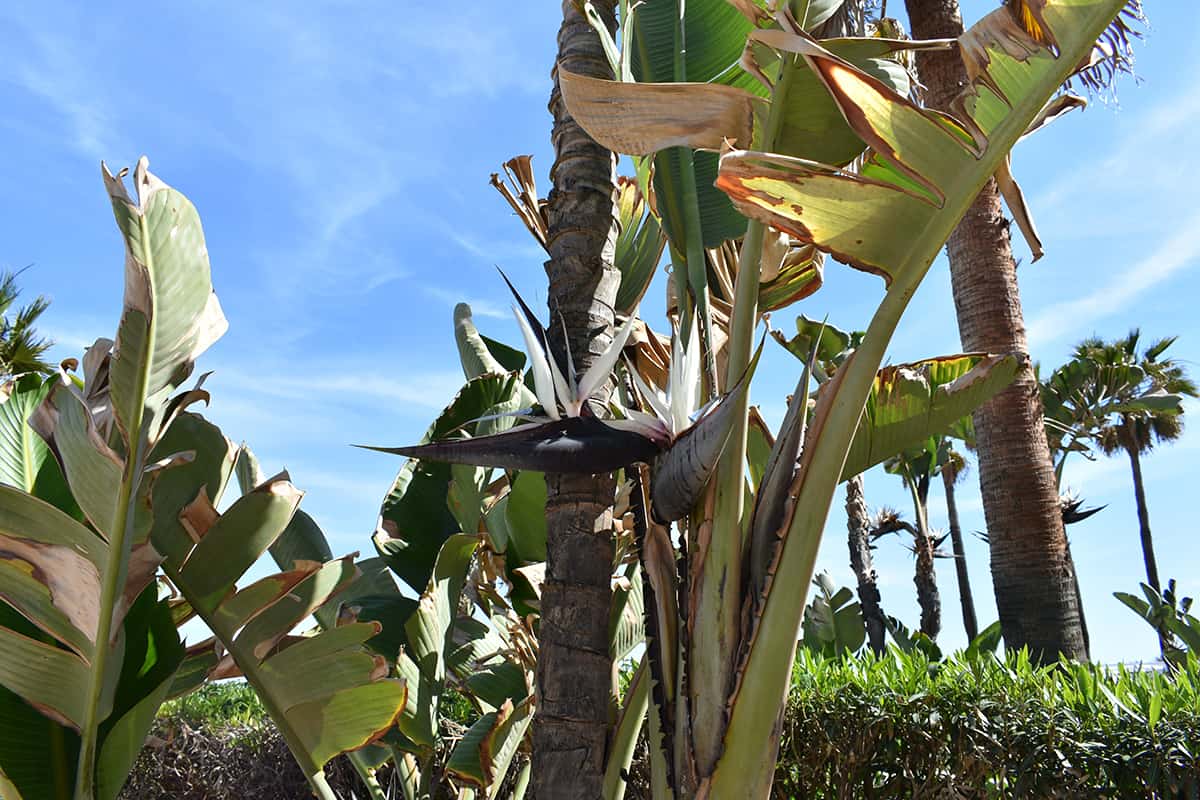
This plant is botanically known as Strelitzia nicolai. It is commonly called the Giant Bird of Paradise plant, but it also goes by the common names of White Bird of Paradise Plant and Wild Banana plant. It isn’t actually related to the true banana plant genus, but it looks remarkably similar, and it is not unusual for it to be mistaken for a type of banana plant.
As you would expect from its common name, this is a large plant, and it typically grows to heights of 25 feet, with a spread of up to 11 feet. The foliage, like true banana plants, is huge, with stems holding oblong leaves in an upright position. The leaves are green and they grow in dense clumps, just like banana plants.
Most people who grow the Giant Bird of Paradise plant do so because they love the flowers. Although the leaves of the plant are stunning, it is the flowers that are the real show-stopper for this plant. The blooms take the shape of an avian bird of paradise in white, pink, and dark blue. They are exceptionally large flowers and can measure up to 18 inches in length.
These plants can be grown outside or kept as houseplants, but unfortunately, it can be very difficult to encourage them to bloom when kept indoors. Keep the Giant Bird of Paradise plant in a consistently moist, well-draining soil, and allow it partial to bright indirect light. It can grow outside in climates that do not experience frost.
False Bird of Paradise
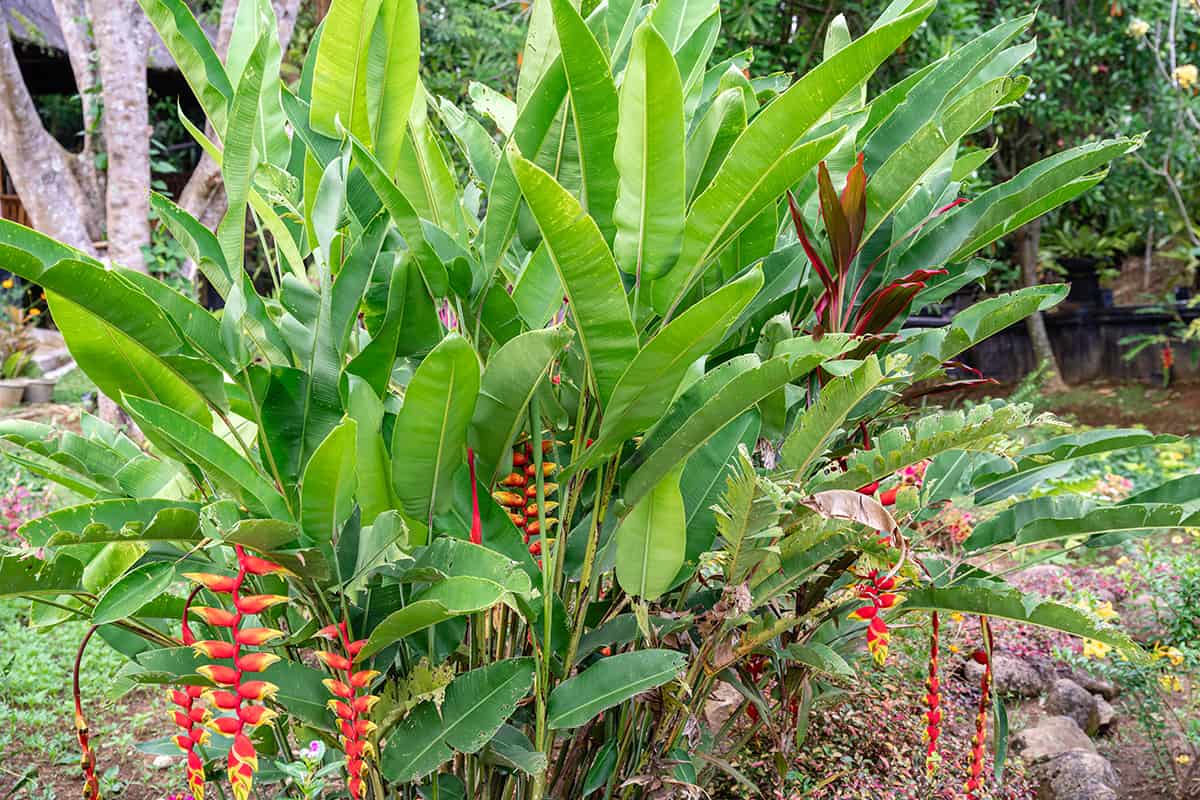
The Heliconia rostrata is commonly known by a variety of names, including the False Bird of Paradise plant, the Lobster Claw plant, and the Parrot Flower plant. Others simply refer to it as Heliconia. This plant looks remarkably similar to the banana tree, and it also behaves in a very similar way, but interestingly the two are not related.
The Lobster Claw plant has long, paddle-shaped leaves just like the banana plant, and both of these plants grow from rhizomes. When grown outside in its native tropical environment, you can expect the plant to grow to 15 feet tall. When grown as a houseplant or outside in imperfect conditions, it will stop growing at around 4 to 6 feet in height.
The plant is named after the flowers it produces, which look similar to the flowers on the Bird of Paradise plant. They arrive on erect racemes, and the part that most people consider to be the flowers are, in fact, not technically flowers at all. The flowers of this plant are tiny and insignificant, but they are surrounded by brightly colored, showy bracts.
The bracts can come in orange, red, or yellow, and they usually look like their tip has been dipped in gold. The shape of the bracts makes them look like lobster claws, and this is further enforced when the bracts are red or orange.
The Lobster Claw plant is not hardy and can only be grown outside in USDA hardiness zones 10 to 13. However, as it is accustomed to warm climates, it makes a good houseplant. It requires partial or full sun and high humidity.
The plant prefers to grow in consistently moist soil, but it can tolerate short periods of drought. It is considered slightly easier to grow than the banana tree, so it might be a good option if your gardening skills aren’t advanced enough to keep the true banana plant alive.
False Banana
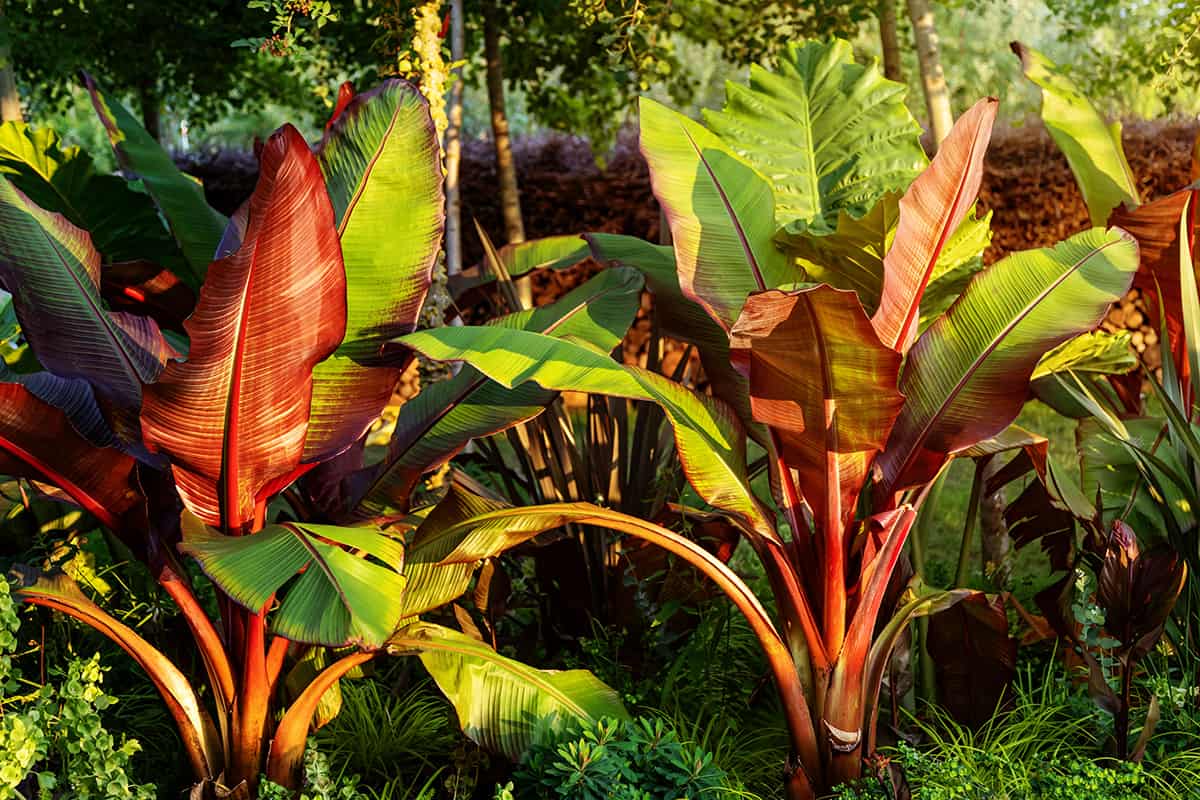
The botanical name of this plant is Ensete ventricosum, but it is also widely known as the Ethiopian Banana plant, the False Banana plant, and the Abyssinian Banana plant.
It is native to Africa and is widely cultivated in Ethiopia, where the plant provides a staple food source amongst the population. Interestingly, it is not the fruit of the plant which is used for food since the fruits are regarded as bland and contain a heavy proportion of seeds. Instead, it is the roots of the plant which are used as food.
The plant is so similar to the true banana plant that it is sometimes mistakenly attributed to belonging to the Musa genus, which is all banana plants. Though it does not belong to the Musa genus, it does fall into the Musaceae, which is the same family as banana plants. The False Banana plant grows to heights of up to 20 feet, and the large paddle-shaped leaves can be up to 16 feet in length.
It is quite drought-tolerant, and cannot be subjected to frost. Grow it in well-draining soil, in a partially shaded position, or in bright indirect light.
Sterling Dumb Cane
If you want a plant that looks like the banana plant but is much easier to care for, then Dieffenbachia ‘Sterling’, also known as the Sterling Dumb Cane, is a good option. Dieffenbachia plants are widely referred to as Dumb Cane plants because they contain toxins that can render you speechless or ‘dumbstruck’ if you ingest a part of the plant.
This is caused by calcium oxalates, which feel like tiny needles stabbing the tongue and throat cavity. The Sterling Dumb Cane is a cultivar of Dieffenbachia, which produces dark green leaves variegated with creamy white veins. The foliage can grow to around 8 inches in length on erect stems held at an upright angle, creating the look of a miniature banana plant.
The Sterling Dumb Cane grows best in partial shade, but it can also tolerate full shade. It works well as a houseplant but is much rarer than standard Dieffenbachia plants, which are very common. The soil of this plant should be well draining, and allowed to dry out between waterings.
The plant enjoys high levels of humidity, so it should be misted occasionally, but it can survive in regular humidity. Always wear gloves when pruning Dieffenbachias in order to avoid coming into contact with the calcium oxalates which are contained in the leaves, stems, and roots of the plant.
